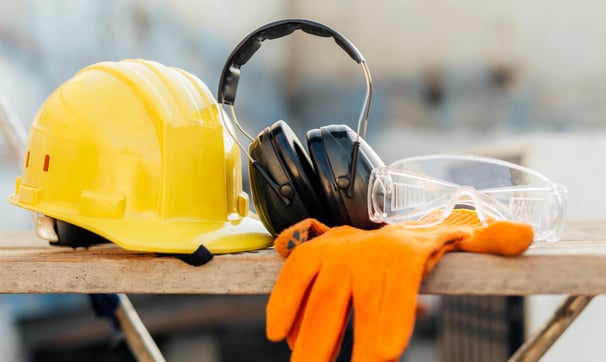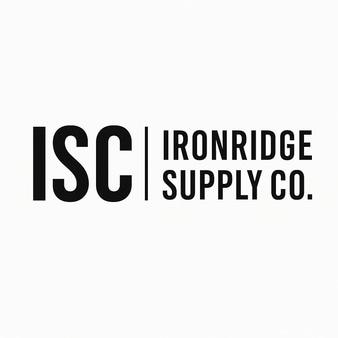Protecting Your People: Choosing the Right PPE and Safety Equipment for Industrial Workplaces
TOOLING & MACHININGFEATURED


From manufacturing plants to maintenance teams, having the right safety gear reduces lost-time incidents, boosts worker confidence, and keeps your operation OSHA-compliant. In this article, we’ll walk through the core categories of PPE, key selection criteria, and tips to ensure your safety program actually keeps people safe.
Why PPE Should Be a Top Priority
According to OSHA, thousands of workplace injuries could be prevented each year with proper PPE use. But not all PPE is created equal. Ill-fitting gloves, outdated hard hats, or the wrong respirators won’t do the job—and in some cases, can make things worse.
The right PPE ensures your team is protected without sacrificing mobility, comfort, or productivity. It’s about creating a safety culture, not just avoiding fines.
Core Categories of PPE in Industrial Settings
1. Head Protection
Hard hats are essential in environments with risk of falling objects, overhead hazards, or head-level machinery.
Types:
Type I: Protects against vertical impact
Type II: Protects against vertical and lateral impact
Class E: Electrical insulation up to 20,000 volts
Tip: Replace hard hats every 5 years (or sooner if damaged)
2. Eye and Face Protection
Dust, debris, chemicals, and UV light are just a few of the dangers to the eyes and face in industrial environments.
Options:
Safety glasses (ANSI Z87.1 rated)
Goggles for chemical splash or fine particulates
Face shields for grinding or welding
Tip: Anti-fog and scratch-resistant coatings improve longevity
3. Hearing Protection
Prolonged exposure to noise over 85 dB can cause permanent hearing damage.
Solutions:
Earplugs (disposable or reusable)
Earmuffs
Electronic hearing protection with noise filtering
Tip: Fit testing helps ensure proper attenuation
4. Hand Protection
Hands are the most injured body part in manufacturing. Proper gloves can prevent lacerations, burns, and chemical exposure.
Types:
Cut-resistant gloves (ANSI A2 to A9)
Heat-resistant gloves
Nitrile or latex for chemical protection
Impact-resistant gloves for heavy-duty work
Tip: Always match glove rating to task
5. Respiratory Protection
Airborne hazards like dust, fumes, or vapors require the right respiratory gear.
Types:
N95/N100 respirators for dust
Half-mask respirators with replaceable cartridges
Powered Air-Purifying Respirators (PAPRs)
Supplied air systems for confined spaces
Tip: Train employees on fit, seal checks, and filter replacement schedules
6. Foot Protection
Safety boots protect against compression, punctures, slips, and electrical hazards.
Options:
Steel toe or composite toe
Slip-resistant soles
EH-rated for electrical protection
Metatarsal guards
Tip: Replace boots when tread is worn or protection is compromised
Other PPE to Consider
High-visibility vests or jackets
Fall protection harnesses and lanyards
Chemical splash suits
Flame-resistant (FR) clothing for welders and electricians
How to Choose the Right PPE
1. Conduct a Hazard Assessment
Start by identifying physical, chemical, biological, and ergonomic risks in each role.
2. Prioritize Fit and Comfort
Poorly fitting PPE won’t be worn consistently. Look for adjustable straps, breathable materials, and ergonomic designs.
3. Match Equipment to Standards
Ensure compliance with OSHA, ANSI, and NFPA where applicable. For example:
Safety glasses: ANSI Z87.1
Gloves: ANSI/ISEA 105
Respirators: NIOSH-approved
4. Educate and Train
Employees need to know when and how to wear PPE, how to inspect it, and when to replace it.
5. Inspect and Replace Regularly
No PPE lasts forever. Build routine inspections into your safety plan and provide replacements without delay.
Common PPE Mistakes to Avoid
Using expired or degraded PPE
One-size-fits-all ordering
Failing to consider comfort or ergonomics
Ignoring PPE compatibility (e.g., eyewear + respirator)
Treating PPE as a substitute for engineering controls
Final Thoughts
PPE is more than a requirement—it’s a sign of a workplace that values its people. The right gear prevents injury, builds trust, and fosters a safety-first culture.
At Ironridge Supply Co., we offer a wide selection of PPE for all industrial environments—from cut-resistant gloves and face shields to fall protection and respirators. Let our experts help you build a custom safety package for your team.
🦺 Browse Industrial PPE & Safety Gear →
📋 Need Help with a Hazard Assessment? Let’s Talk.
